We would like to make one thing clear from the very beginning: this is not a preface, as well as Dacia is not a mere “thing” either.
Dacia is a car that people have been interacting with in different ways. In short, our discussions with the people in the “Dacia – autoturismul copilăriei” community, as well as with the owners of Dacia vehicles photographed in the field have revealed that some refer to the car in the past tense, while others in the present, that to some she is an almost animate figure, while to others she is a relic of the past on the verge of extinction. Mia, the owner of a collectible Dacia, calls her “Dacia, my dear old thing”, Dan Liviu melancholically reminisces “the old automobile, a red one I used to have”, while Remus’ wife “was as fond of her as of a dog or cat”. Dacia is dotingly referred to as “nouveau French” by Dan, “the red arrow” by Romeo, she is Adrian’s “little sour cherry and precious jewel”, Ionuț’s “yellow darling”, while to another Ionuț she is “lonely and sad”. Mircea sees her as “extinct”, Radu as “nibbled by rust”, and she reminds Liliana of a separation that “literally brought tears” to her eyes.
Dacia, the city car, is a “She” with many stories to tell, ways of life which we are going to introduce to you, as they came into being and are breathing, in this visual project, DACIA 50, and which we are going to present throughout several chapters.
The car Dacia started its four-wheel existence in Romania in 1968, on the 20th of August, when the first Dacia car model 1100 was manufactured and was ready for the road.
In 2018, we can say we have already crossed 50 years of roads and intersections, trips and adventures together. Therefore, before the visual project commences, we wish to present Dacia’s existence in the context of the Romanian automobile scene, where Dacia 1100 was considered to be “the newborn of the Romanian automotive industry”, and then Dacia 1300 – “the youngest industry offspring”, and as part of the dynamics of the fascinating changes she has undergone during the fifty years that have passed.
Furthermore, with the DACIA 50 project, we would like to make a visual exploration of the car’s existence in terms of when it was born and how it intermingled with people’s lives and the environment. Another at least equally interesting story is that of Dacia evolving on the symbolic ground of various human perceptions, subject to ongoing codification and setting. The project includes the various avatars of Dacia – the public domain car, Dacia – the reconditioned car and the car being reflected in the memorabilia objects, those being characteristics of Dacia car culture. Albert, the man behind the camera, is the person who followed Dacia on the streets and on the sidewalks of Bucharest, the reconditioned Dacia at automobile parades, and discovered the automobile in collectors’ garages and searched for the collectibles, mock-ups and toys.
In this album, which we consider to be only the first chapter of DACIA 50, we shall see a car that is connected to the urban environment and its traces on the map of the city where we placed each car we explored. The photographer recommends that we explore and see the relation between the stationed car, the people, the urban space and nature.
On the inside, the car almost looks like it has been holding its breath. The inside of Dacia of the past century’s decades feels like a museum of mechanics and of personal
items marking the relationship between the owner and the driven car. We might even say that it is some sort of a memorial museum on four wheels, each car fashioned in
its owner’s image.
The description of each project photograph includes the geographical coordinates of the place where it was taken. Thus, we can follow the dynamics of these urban cars
by comparing the Google Street View images from 2014, where such images exist, with the ones Albert came across in 2016 and 2017 and, why not, by direct observation,
while walking these Bucharest streets again, with the DACIA 50 photo album as a tour guide.
In 2018, we went back in the field we explored two years ago, to see what happened in the meantime to the photographed cars. At the end of the visual chapter we added
the notes we took in the field, including details about these cars, their evolution in time and, especially their stories as collected from owners, inheritors, former owners or
neighbours.
Regardless of how we might find the historic Dacia – as an operational car travelling the country roads or in its position as a car withdrawn from circulation, parked in the
urban or rural environment – today it feels like an “animate object” interacting with its environment.
Book details:
DACIA 50 Autoturismul
Bucharest, 2018. ISBN 978-606-94598-0-5 (9786069459805)
Limited edition, 300 books. SOLD OUT.
A4 format, 124 pages, offset print, color, matte paper, hardcover
OMNIA PHOTO Publishing House
Albert Adrian VRĂBIUȚĂ (photos), Ana-Cristina IRIAN (text, documentation), Valentin MAIER (text, documentation), www.traduce.re (translation), Paul Adrian FARCAȘ (graphics), Alex CRUCERU (proofreading), Cristian BASSA (editor)

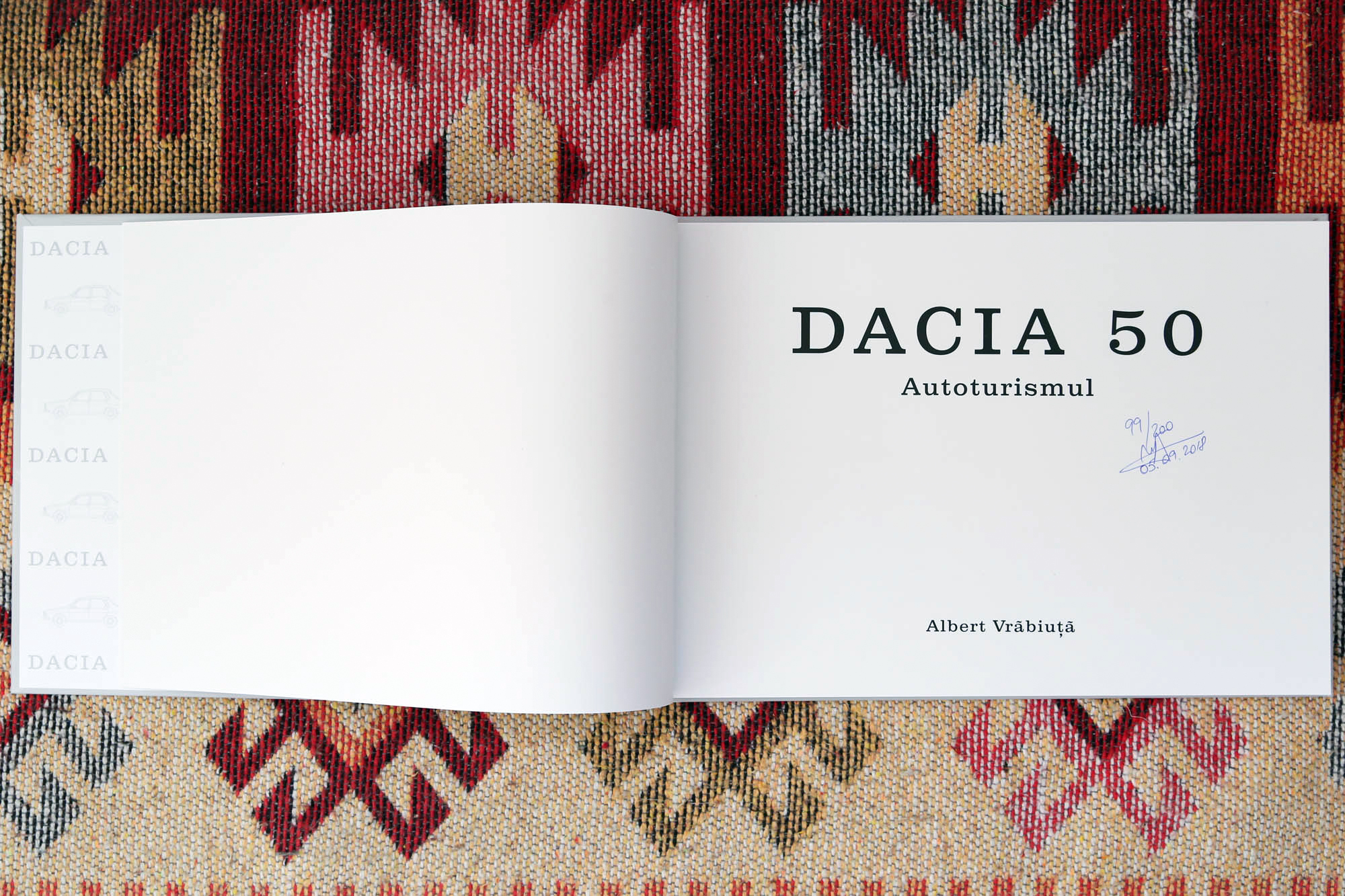
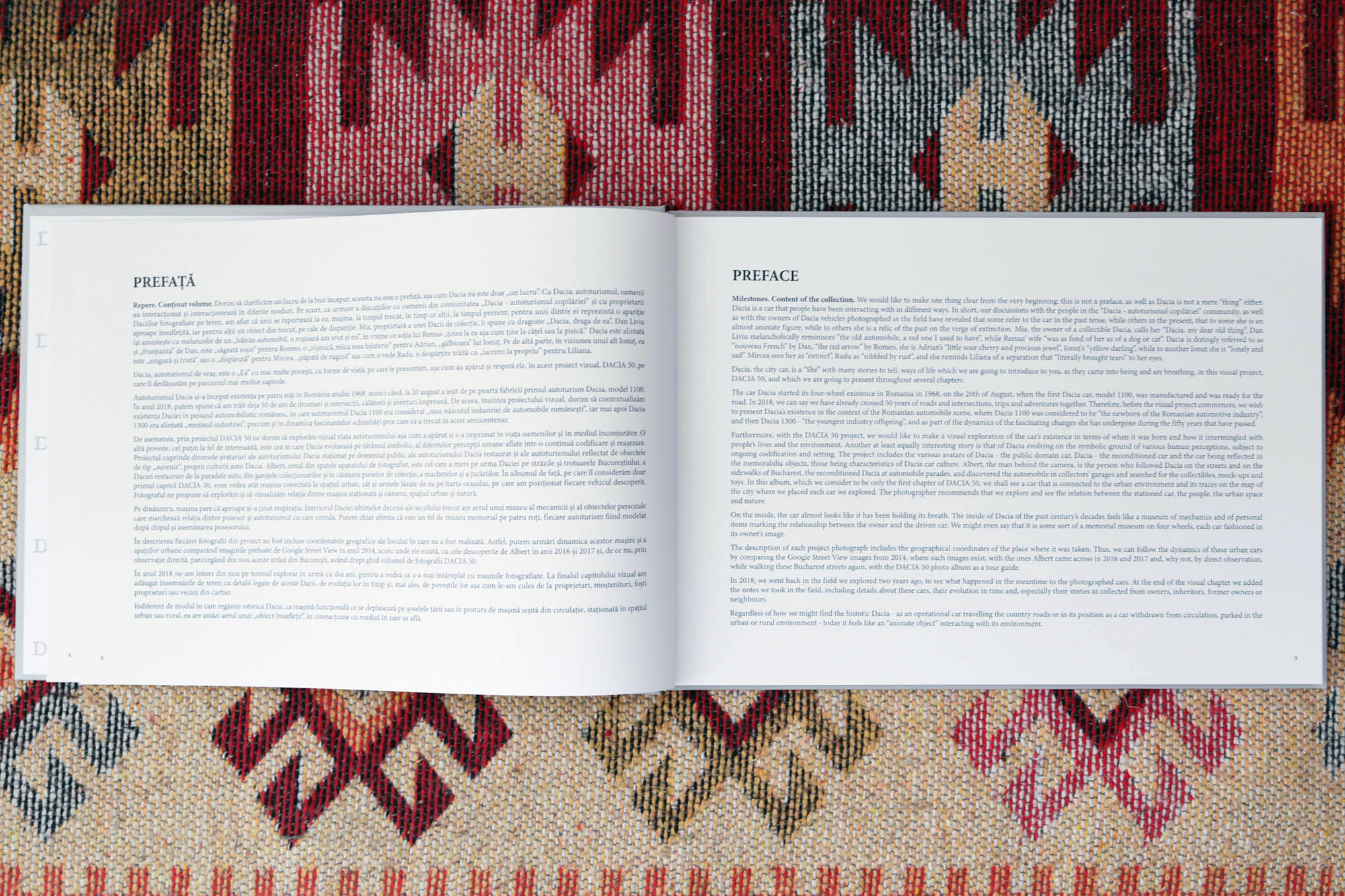


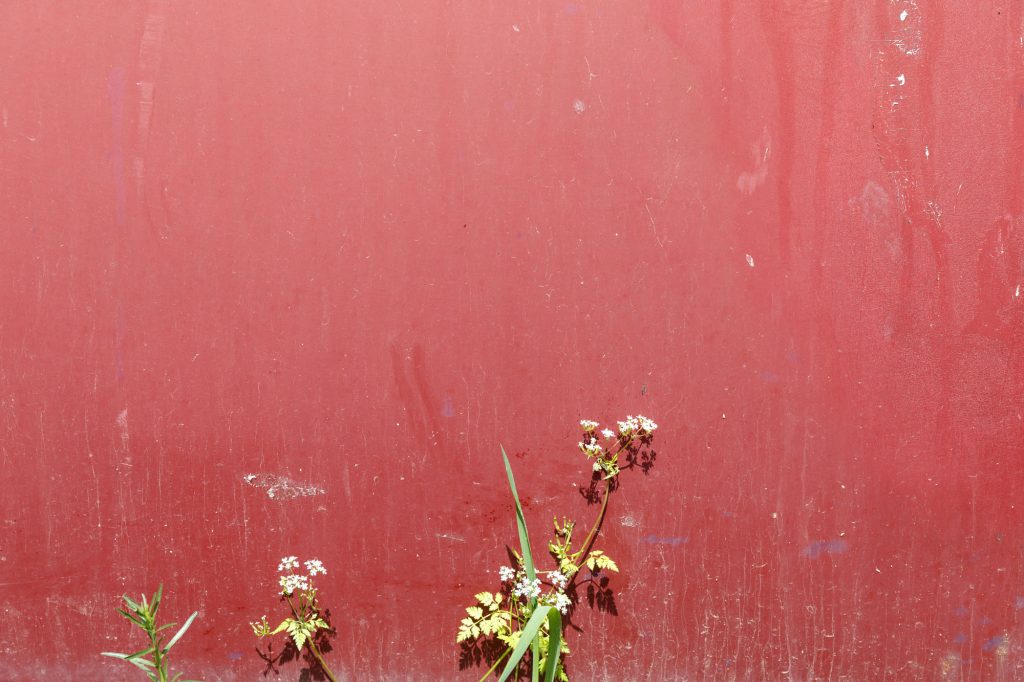
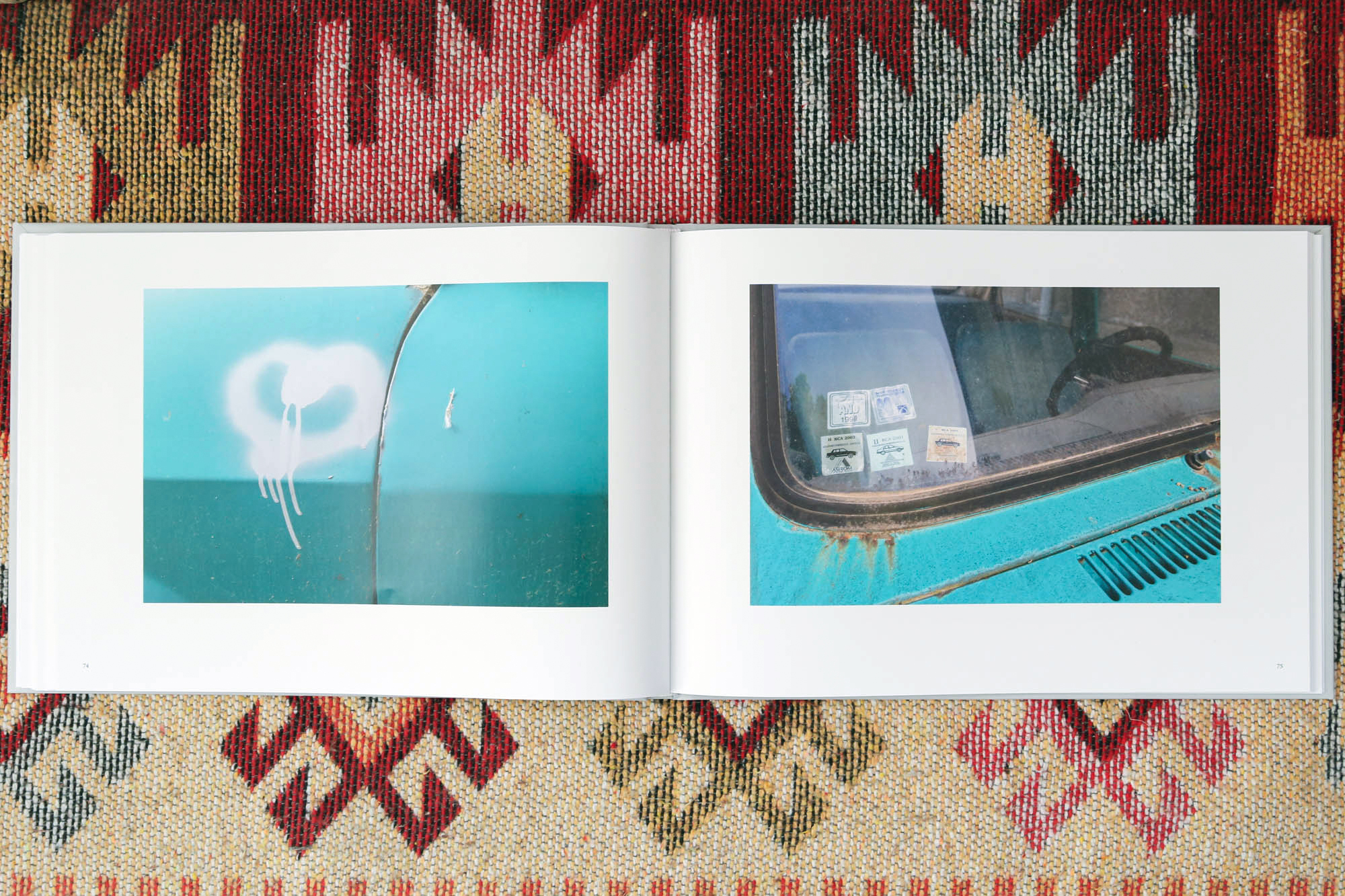
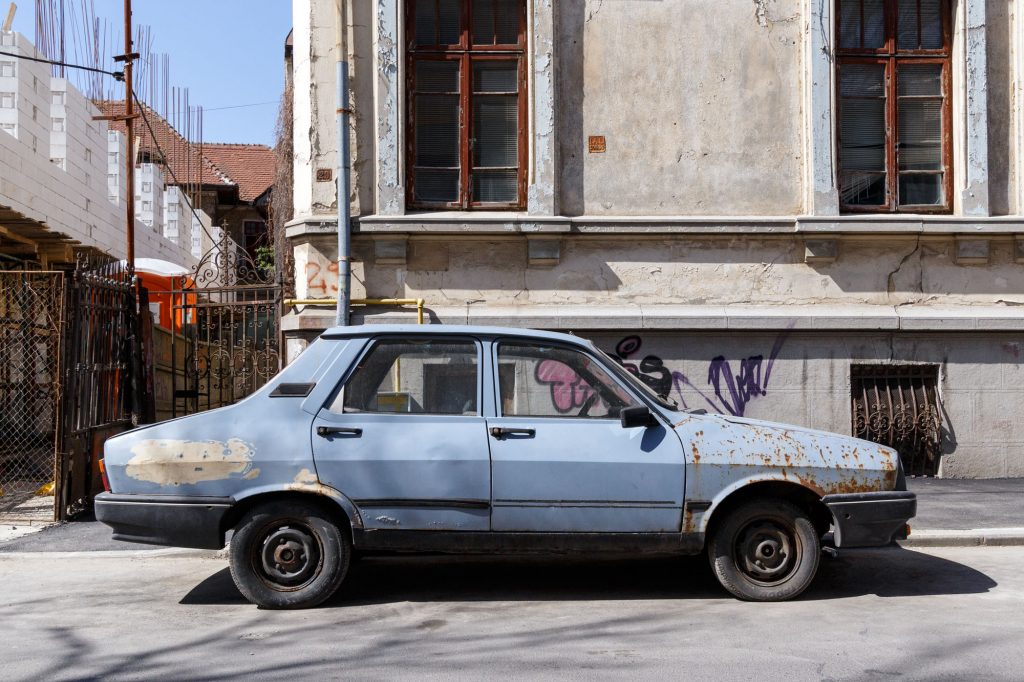



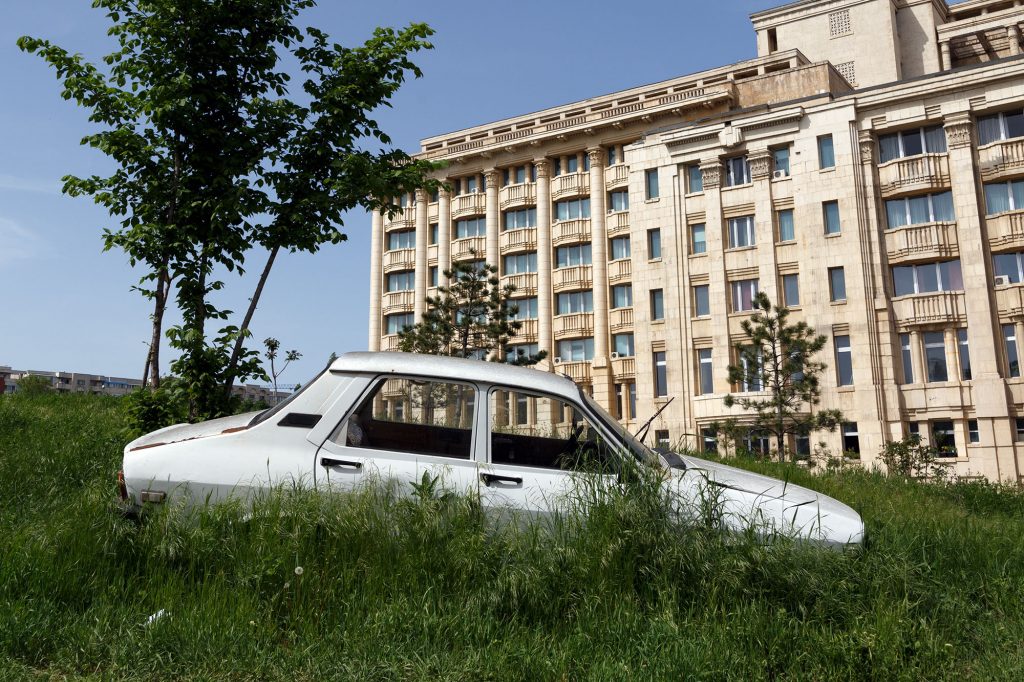
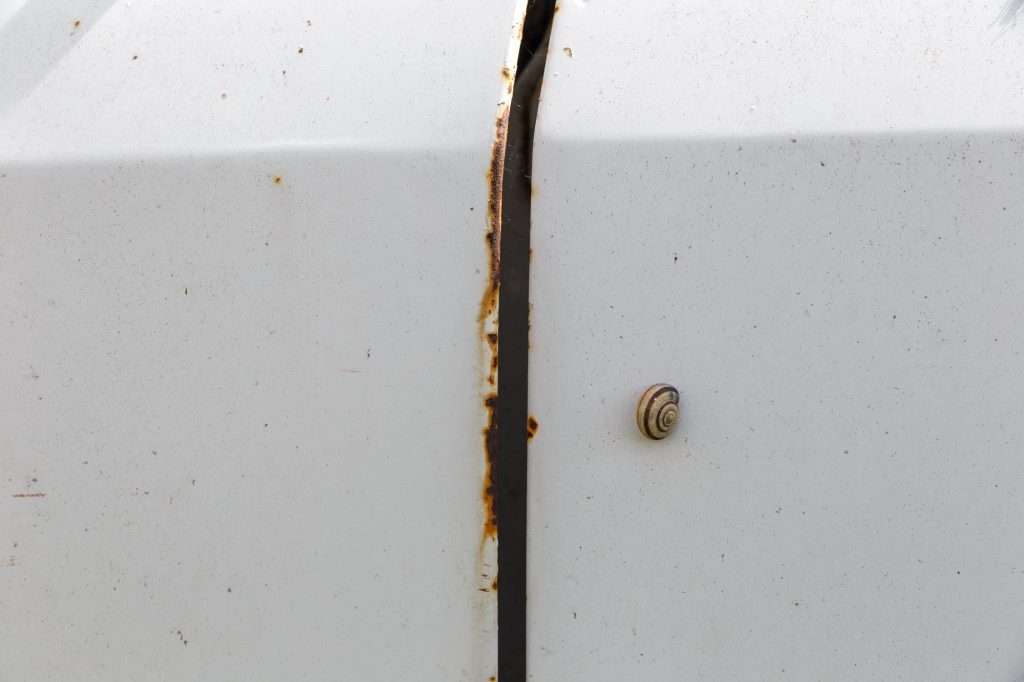
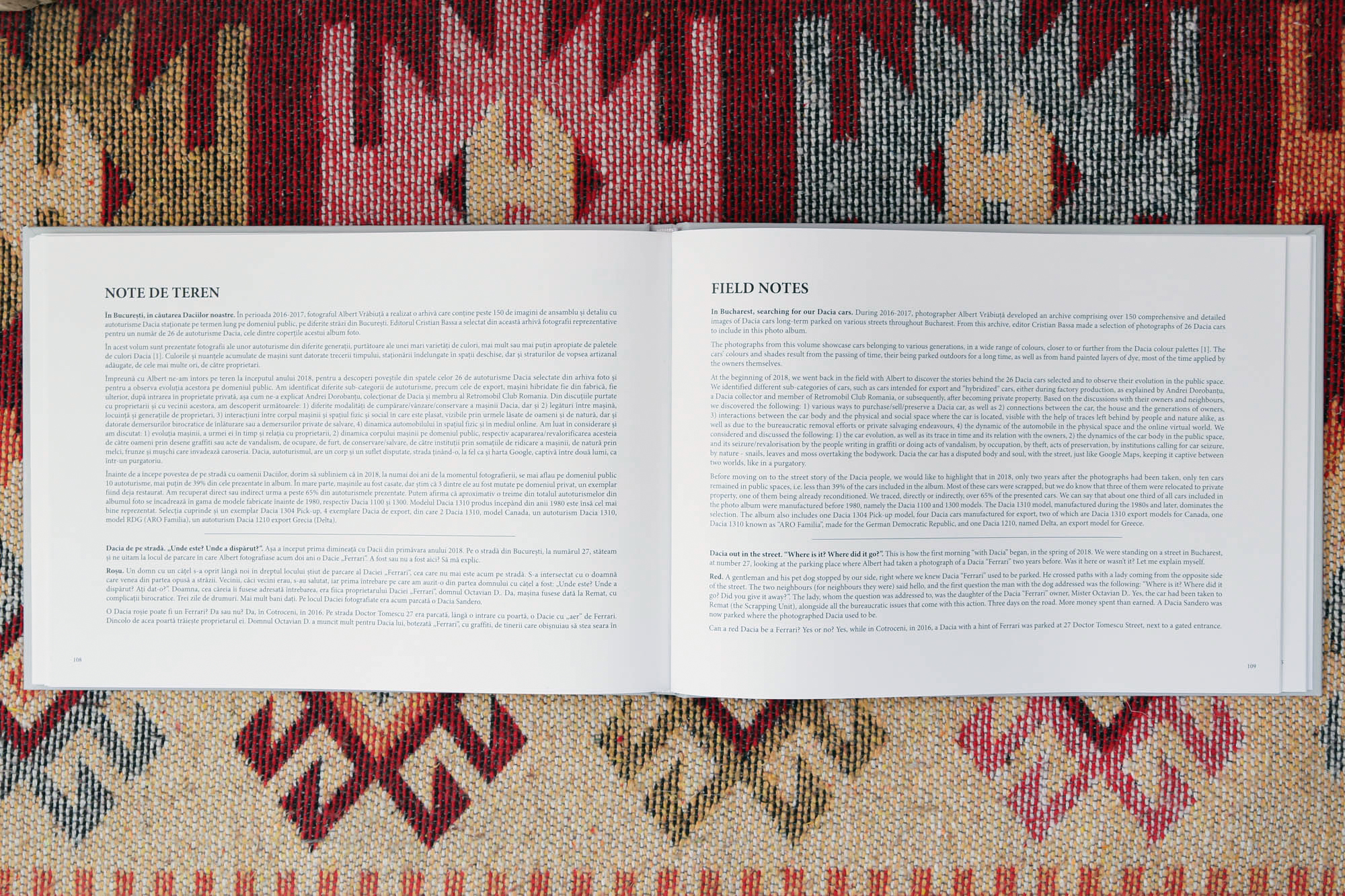
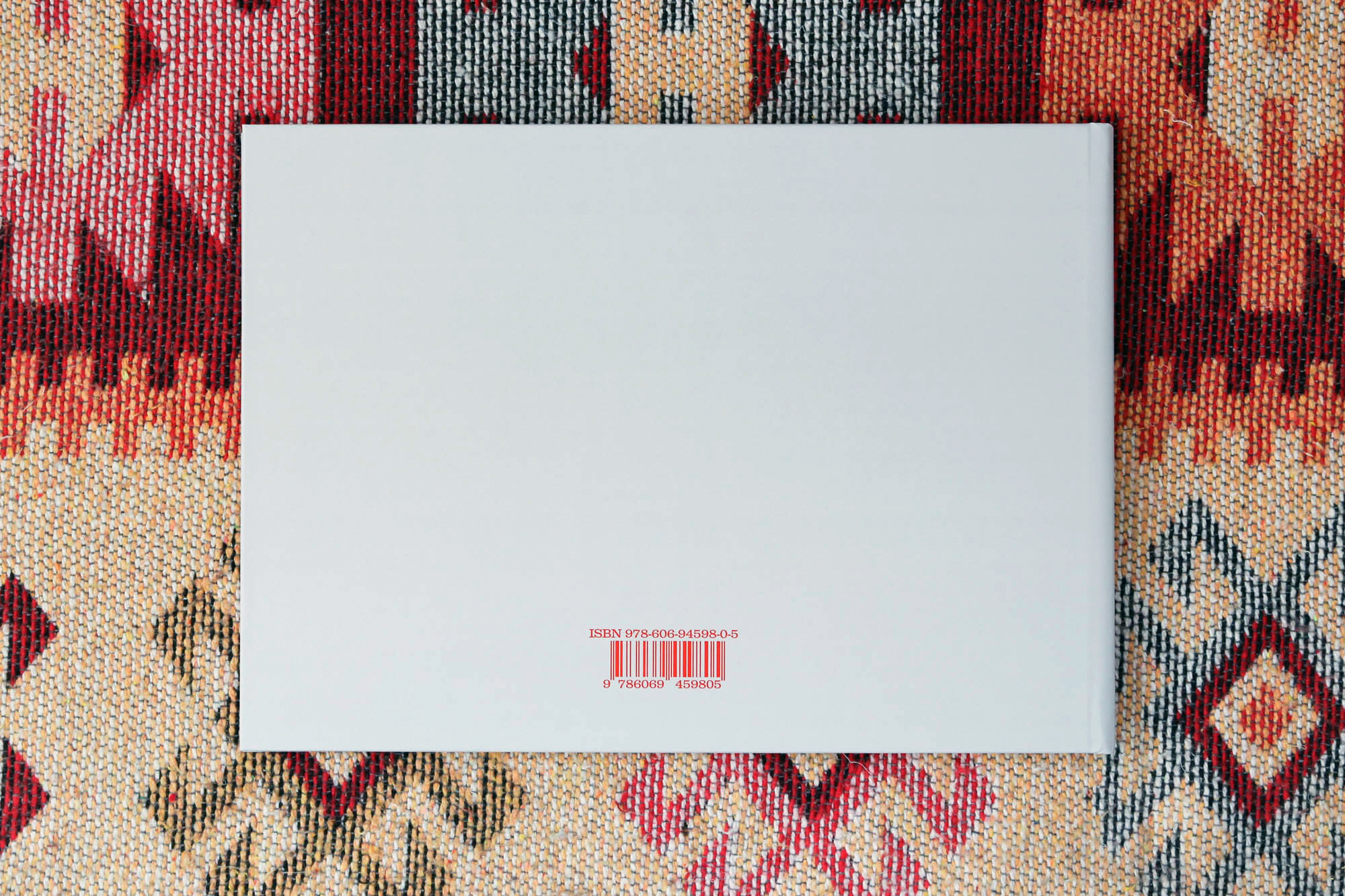
2 thoughts on “Albert Vrăbiuță – DACIA 50 Autoturismul”